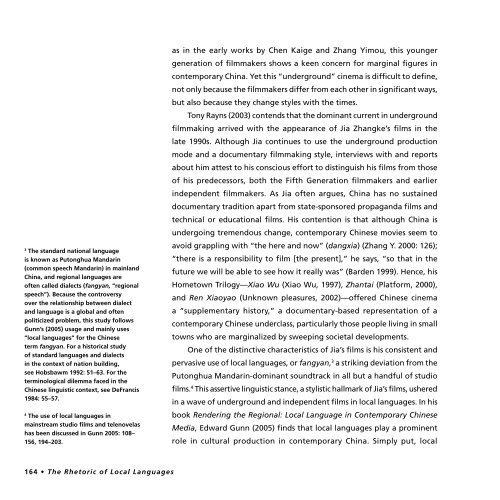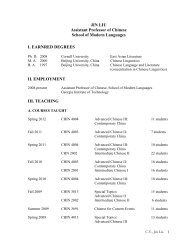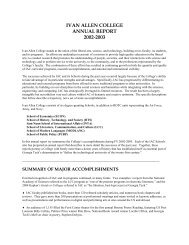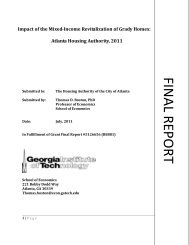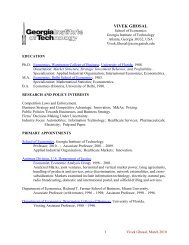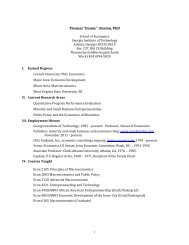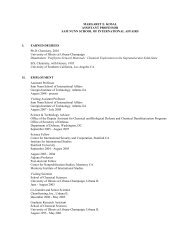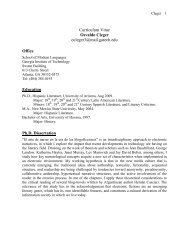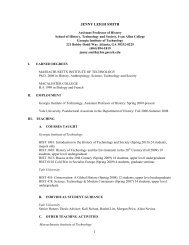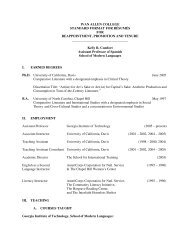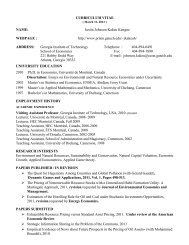Read this paper
Read this paper
Read this paper
Create successful ePaper yourself
Turn your PDF publications into a flip-book with our unique Google optimized e-Paper software.
3<br />
The standard national language<br />
is known as Putonghua Mandarin<br />
(common speech Mandarin) in mainland<br />
China, and regional languages are<br />
often called dialects (fangyan, “regional<br />
speech”). Because the controversy<br />
over the relationship between dialect<br />
and language is a global and often<br />
politicized problem, <strong>this</strong> study follows<br />
Gunn’s (2005) usage and mainly uses<br />
“local languages” for the Chinese<br />
term fangyan. For a historical study<br />
of standard languages and dialects<br />
in the context of nation building,<br />
see Hobsbawm 1992: 51–63. For the<br />
terminological dilemma faced in the<br />
Chinese linguistic context, see DeFrancis<br />
1984: 55–57.<br />
4<br />
The use of local languages in<br />
mainstream studio films and telenovelas<br />
has been discussed in Gunn 2005: 108–<br />
156, 194–203.<br />
as in the early works by Chen Kaige and Zhang Yimou, <strong>this</strong> younger<br />
generation of filmmakers shows a keen concern for marginal figures in<br />
contemporary China. Yet <strong>this</strong> “underground” cinema is difficult to define,<br />
not only because the filmmakers differ from each other in significant ways,<br />
but also because they change styles with the times.<br />
Tony Rayns (2003) contends that the dominant current in underground<br />
filmmaking arrived with the appearance of Jia Zhangke’s films in the<br />
late 1990s. Although Jia continues to use the underground production<br />
mode and a documentary filmmaking style, interviews with and reports<br />
about him attest to his conscious effort to distinguish his films from those<br />
of his predecessors, both the Fifth Generation filmmakers and earlier<br />
independent filmmakers. As Jia often argues, China has no sustained<br />
documentary tradition apart from state-sponsored propaganda films and<br />
technical or educational films. His contention is that although China is<br />
undergoing tremendous change, contemporary Chinese movies seem to<br />
avoid grappling with “the here and now” (dangxia) (Zhang Y. 2000: 126);<br />
“there is a responsibility to film [the present],” he says, “so that in the<br />
future we will be able to see how it really was” (Barden 1999). Hence, his<br />
Hometown Trilogy—Xiao Wu (Xiao Wu, 1997), Zhantai (Platform, 2000),<br />
and Ren Xiaoyao (Unknown pleasures, 2002)—offered Chinese cinema<br />
a “supplementary history,” a documentary-based representation of a<br />
contemporary Chinese underclass, particularly those people living in small<br />
towns who are marginalized by sweeping societal developments.<br />
One of the distinctive characteristics of Jia’s films is his consistent and<br />
pervasive use of local languages, or fangyan, 3 a striking deviation from the<br />
Putonghua Mandarin-dominant soundtrack in all but a handful of studio<br />
films. 4 This assertive linguistic stance, a stylistic hallmark of Jia’s films, ushered<br />
in a wave of underground and independent films in local languages. In his<br />
book Rendering the Regional: Local Language in Contemporary Chinese<br />
Media, Edward Gunn (2005) finds that local languages play a prominent<br />
role in cultural production in contemporary China. Simply put, local<br />
164 • The Rhetoric of Local Languages<br />
MCLC 18.2.indd 164<br />
12/20/06 2:01:34 PM


